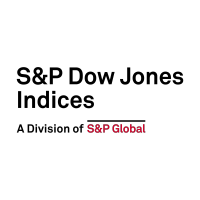Tag Archives: S&P 600
How Sector Neutrality Influences Risk/Return in S&P Dividend Aristocrats
What are the potential benefits of a sector neutral approach to S&P Dividend Aristocrats? S&P DJI’s Rupert Watts and State Street Global Advisors’ Colin Ireland explore the construction and range of potential applications for the S&P Sector-Neutral High Yield Dividend Aristocrats.
- Categories Equities
-
Other Tags
diversification, ETFs, high yield dividend growers, indexing, large-cap equities, Mid-cap equities, quality dividend growers, Rupert Watts, S&P 1500, S&P 400, S&P 500, S&P Composite 1500, S&P Dividend Aristocrats, S&P Sector-Neutral High Yield Dividend Aristocrats, sector-neutrality, sectors, small-cap equities, U.S. Equities
- Categories
- Equities
- Other Tags
- diversification, ETFs, high yield dividend growers, indexing, large-cap equities, Mid-cap equities, quality dividend growers, Rupert Watts, S&P 1500, S&P 400, S&P 500, S&P Composite 1500, S&P Dividend Aristocrats, S&P Sector-Neutral High Yield Dividend Aristocrats, sector-neutrality, sectors, small-cap equities, U.S. Equities
Examining Cash Flow in Small-Cap U.S. Equities
How does screening the S&P 600 for the top 100 companies based on free cash flow yield influence performance? S&P DJI’s Michael Mell takes a custom look at the Pacer US Small Cap Cash Cows Index with Sean O’Hara, President of Pacer ETFs and Cameron Dawson, Chief Investment Officer at NewEdge Wealth.
- Categories Equities
- Other Tags
Who’s Naughty and Nice
At this time of year, my 9 year old excitedly polishes his boots so that, according to Hungarian tradition, Santa can fill them with sweets and toys during the night between December 5 and 6 (yes, he does arrive a few weeks early in Central Europe). Just like in years past, I am sure he…
- Categories Equities
- Other Tags
- Categories
- Equities
- Other Tags
Connecting the S&P/ASX 200 to U.S. Equity Icons
Many market participants have a “home bias,” typically having larger exposures to domestic securities than would be determined by their representation in the global opportunity set. Australia is no exception: compared to Australia’s 2% weight in the S&P Global BMI, Australian investors allocated an estimated 49% of their total equity allocation to domestic stocks at…
- Categories Equities
- Other Tags
SPIVA and the Challenges of Active Outperformance
What are the three main reasons it’s hard for most active managers to beat their benchmarks? Explore findings from the SPIVA and Persistence Scorecards with S&P DJI’s Craig Lazzara including an allegorical look at what might happen if Craig challenged Michael Jordan to a free-throw shooting contest.
- Categories Equities
- Other Tags
Examining Equal Weight
In this tumultuous market characterized by Fed rate hikes, elevated inflation and a strong dollar, mega-cap growth companies have suffered heavy losses, paced by recent “Big Tech” earnings disappointments from Meta, Microsoft, Alphabet, Amazon and others. The S&P 500® Top 50 declined by 19% over the past 12 months, underperforming the S&P 500 by 5%….
- Other Tags
Why Core Construction Matters
Look inside the S&P 1500 and its core components as S&P DJI’s Hamish Preston explores the performance of Equal Weight and sector indices, as well as highlighting how positive earnings can influence performance.
- Categories Equities
- Other Tags
Refining the Quality Metrics
Introduction High-quality companies have always been appealing to investors. In fact, quality equity investing was documented as early as 1949 by Benjamin Graham in his original publication of The Intelligent Investor.1 Despite a wide range of definitions for what constitutes a high-quality company, characteristics such as profitability, competitive position, earnings quality, corporate governance and modest…
- Categories Factors
- Other Tags
Examining the Effectiveness of Indexing Small Caps
How does profitability influence risk and return in small-cap equities and why is it important to know what’s under the hood of your small-cap index S&P DJI’s Garrett Glawe, State Street Global Advisors’ Matthew Bartolini, and ValMark Advisors’ Michael McClary take a closer look at the S&P SmallCap 600.
- Categories Equities
- Other Tags
S&P SmallCap 600: A Pandemic Case Study
Index construction matters when seeking to understand differences in index characteristics and any resulting divergences in index performance. One of the clearest examples of the importance of index construction comes when comparing the S&P SmallCap 600® and the Russell 2000. Indeed, while both indices are designed to measure the performance of the small-cap U.S. equity…
- Categories Equities
- Other Tags














































